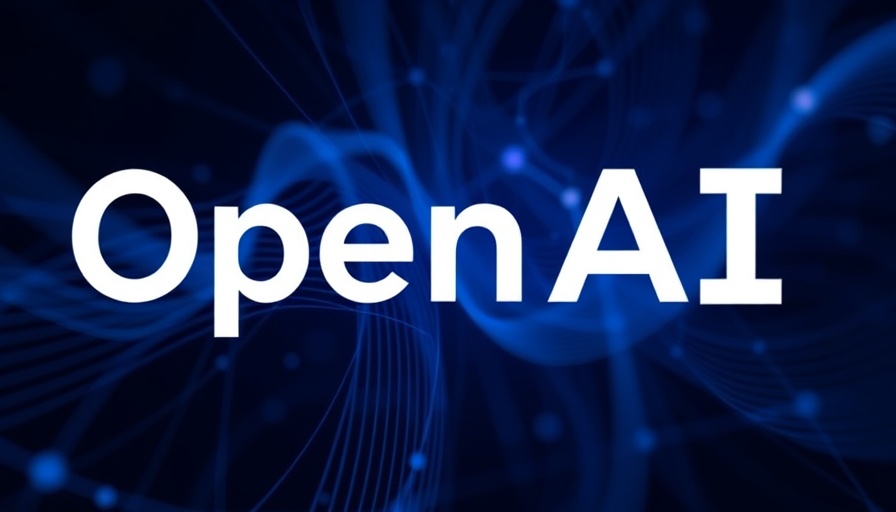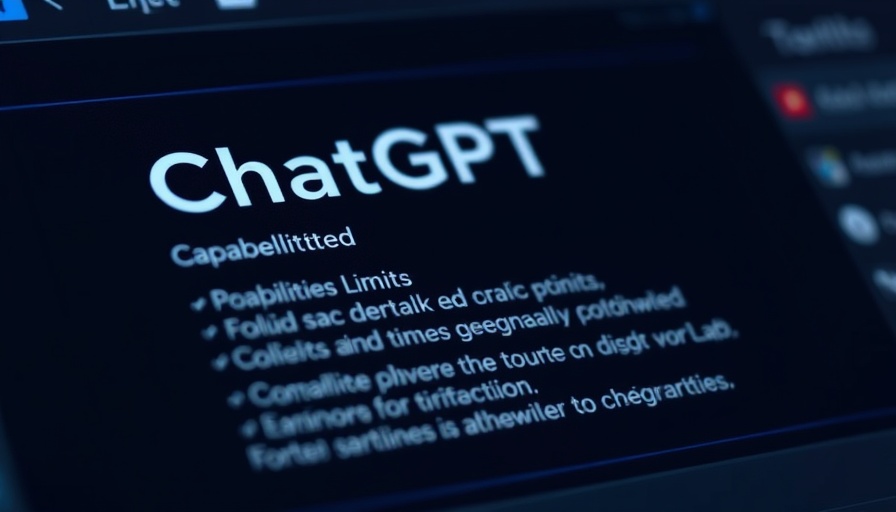
OpenAI's Upcoming Open-Weight Model: A Shift in AI Accessibility
OpenAI is poised to make a significant leap in artificial intelligence accessibility by launching its first publicly available language model since GPT-2 in 2019. In a recent announcement by CEO Sam Altman, this new "open-weight" model promises users the freedom to use, modify, or deploy the technology on their own systems, marking a departure from the proprietary nature of GPT-3 and GPT-4. As the AI landscape evolves, what does this mean for developers and consumers alike?
Why Open-Weight Matters: Empowering the Developer Community
An open-weight model is defined as a system that grants users partial access to the underlying framework, unlike a fully closed model. This allows for greater customization and experimentation by developers, which can lead to innovative applications tailored to specific needs. By organizing developer events in San Francisco, Europe, and the Asia-Pacific, OpenAI is inviting creators to collaborate before the official release. This approach not only fosters community engagement but also enhances the model based on real-time feedback.
Historical Context: From GPT-2 to Today's Innovations
The release of GPT-2 in February 2019 was revolutionary for the AI space, as it offered notable language capabilities that could be integrated into various applications. Following its full release later that year, the model set a benchmark for natural language processing. Since then, the AI arms race has intensified, with competitors like Anthropic and Nvidia making strides in the field. OpenAI's return to the open model route signals a shift towards inclusivity, reminding us of the early days of AI development when access spurred innovation.
The Need for Openness in AI Development
As AI technology makes its way into every facet of society, the call for transparency and openness grows louder. Currently, major AI players often operate behind closed doors, limiting how technologies can be examined and improved. OpenAI's decision to develop an open-weight model paves the way for better oversight and understanding, promoting ethical considerations in how AI's capabilities are utilized. Encouraging wider access could also democratize AI, leveling the playing field for smaller developers who might otherwise be left out of the race.
What This Means for the Future of AI Applications
With plans to host developer events and facilitate community engagement, OpenAI's forthcoming model could potentially lead to a diverse range of applications. From automating mundane tasks to enhancing customer service experiences, the opportunities for integration are extensive. Large corporations and government entities could opt to run the model on private servers, ensuring data security while harnessing cutting-edge technology. The implications for industries such as healthcare, finance, and education are profound, as tailored solutions emerge from grassroots innovation.
The Future of OpenAI: Exciting Times Ahead
Sam Altman hinted at more releases, including GPT-5 and GPT-4.5, in the months to come, indicating that OpenAI is not slowing down. This new strategy could very well reshape how we think about and utilize AI in the years ahead. As we gear up for the open-weight model's debut, it is crucial for AI enthusiasts and developers to engage actively, shaping the technology they will eventually adopt. With everyone invited to contribute, the future of AI might be more collaborative and adaptable than ever before.
As the launch approaches, stay tuned to join in the conversation and shape the future of AI technology. OpenAI's commitment to openness may not just represent a new model but herald a new era in artificial intelligence.
 Add Row
Add Row  Add
Add 




 Add Row
Add Row  Add
Add 

Write A Comment